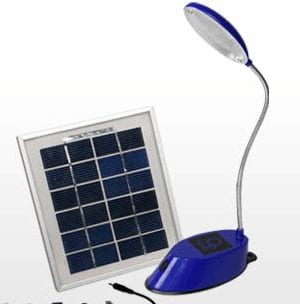The Australian social entrepreneurial and solar lighting group Barefoot Power has announced it as doubled the number of people it has brought affordable lighting to across the world to two million, and it has also landed a new round of funding.
Barefoot Power, established by two former Hydro Tasmania employees Stewart Craine and Harry Andrews in 2005, set itself the goal of delivering affordable power to 10 million people in areas without electrification via its solar lighting and phone charging products.
In 2011, it reached 1 million and it has now reached 2 million in 20 countries. It says it products displace more expensive, and highly polluting kerosene lighting.
The group has also completed a $5.8 million “series B” fund raising from Australian and overseas groups. This includes existing shareholders, the Melbourne based Christian charity The Grace Foundation, and microfinance group Oikocredit. New investors included social investment funds d.o.b Foundation, ennovent and Insitor Fund, and some private angel investors. The funding was pulled together by Sydney-based Unitus Capital.
Barefoot Power CEO Rick Hooper said the fund raising would enable Barefoot to continue its growth projectory and meet the 10 million target.
d.o.b. director Hedwig Siewertsen said Barefoot Power provided access to an affordable and environmentally friendly product for people that currently live without electricity. “Bringing a product to Mombasa or Accra is not so difficult,” he said. Getting it deep into the power grid lacking markets through a network of dealers and micro-entrepreneurs who can offer a warranty for the product, that is the real challenge that Barefoot Power has been addressing successfully in the past few years.”
Barefoot Power, which has won numerous international awards for its work, estimates more than 1.5 billion people lack access to electricity and aims to “reverse” the traditional process of rural electrification, and avoid the need to use kerosene lighting and to walk large distances for battery and phone charging. It says that more than $15 billion is spent around the world on kerosene each year, but its solar lamps costs half as much.
Craine told RenewEconomy last year that Barefoot’s success demonstrates that the poor can afford to pay cash for renewable energy without the need for subsidies, and that there is a significantly bigger pool of money within the villages to be spent on electrification than is ever likely to come from international donor nations.







